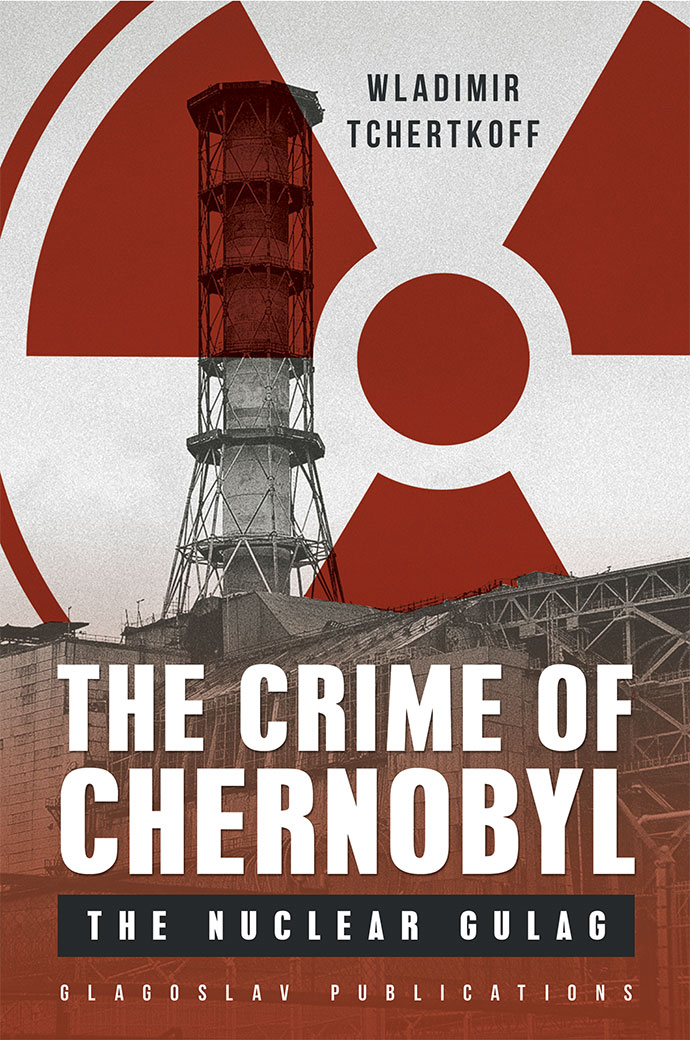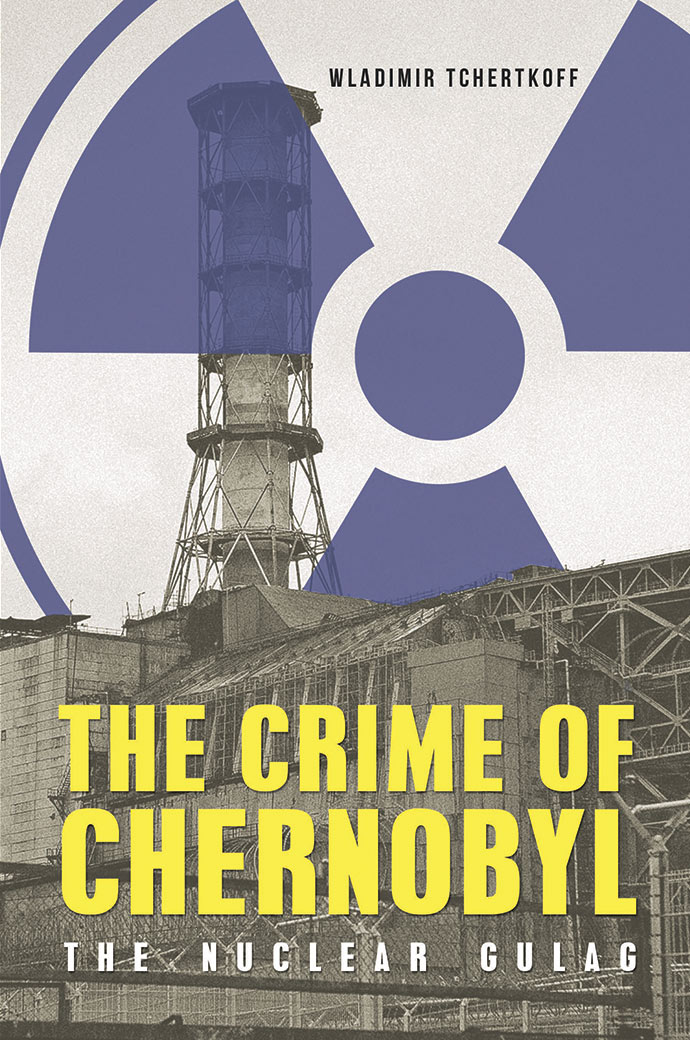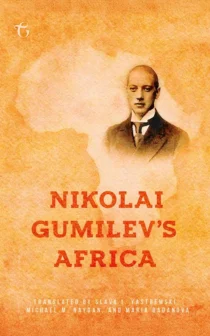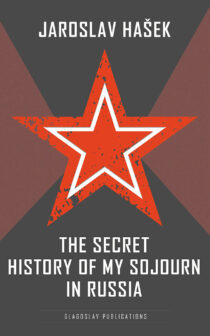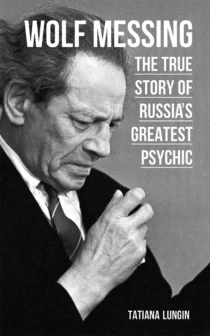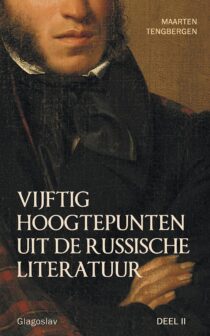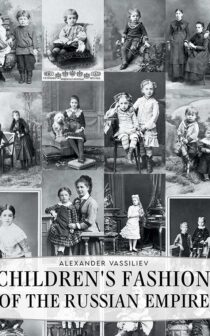The Crime of Chernobyl: The Nuclear Goulag
Price range: €9.95 through €34.70
Author: Wladimir Tchertkoff
Translator: Susie Greaves
Editors: Susie Greaves and David Greaves
Hundreds of books, long and short, have been written about the Chernobyl tragedy. Few people are left indifferent once they understand a little about the biggest technological catastrophe in history. Wladimir Tchertkoff’s book “The Crime of Chernobyl – the Nuclear Gulag” occupies a central place in this library about Chernobyl.
Hundreds of books, long and short, have been written about the Chernobyl tragedy. Few people are left indifferent once they understand a little about the biggest technological catastrophe in history. Wladimir Tchertkoff’s book The Crime of Chernobyl: The Nuclear Gulag occupies a central place in this library about Chernobyl.
Many journalists, like Wladimir Tchertkoff, a documentary film maker for Swiss televisionf, were shocked by what they saw in the areas affected by the radioactive emissions following the explosion at Reactor 4 of the Lenin nuclear power plant in Chernobyl (Ukraine). Many witnesses, like Tchertkoff, were revolted by the events that followed in the scientific and political world after the Catastrophe. But very few were able to gather together all the facts to back up these feelings of indignation in a formidable work of documentation.
Tchertkoff’s book does not limit itself to remembering the events. It demands of each of us that we grasp the fact that following the Chernobyl catastrophe, the damage to human health and to the natural environment will be felt for hundreds of years over immense areas of the northern hemisphere contaminated by strontium-90 and caesium-137, and for tens of thousands of years by plutonium in a number of areas of Ukraine, Belarus and Russia.
Tchertkoff’s book is reminiscent of Alexander Solzhenitsyn’s famous book The Gulag Archipelago, not simply in its title but in the method used to select and reveal the facts: it is a documentary (supplying names, titles and dates), it is encyclopaedic (the destinies and actions of individuals are accompanied by medical, historical, physical, biological, legal and political documentation) and it is passionate (the author is not a foreign observer but an active participant in events).
The bringing together of all this information, combined with the author’s obvious talent as a writer, makes the publication of Wladimir Tchertkoff’s book an important event for thousands and thousands of people in different countries. For those living in the contaminated territories, or those who have been exposed in any way to dangerous levels of artificial radionuclides, this book will help them towards a better understanding of how to deal with the dangers posed by radiation to themselves and to those closest to them. For those who are trying, in spite of the reaction to the consequences of Chernobyl from governments and international organisations, which was muted, to say the least, to understand more fully and to reduce to a minimum the uncontrolled effects of “Atoms for Peace” – the chronic exposure to low level ionising radiation, the effects of artificial radiation on health – this book will provide great moral support.
This is an important book for the history of contemporary society: it documents the way in which, during the last quarter of the twentieth century and the beginning of the twenty-first century, political statements diverged, sometimes diametrically, from the real action taken. The corporate interests of the nuclear industry and short-term “political expediency” took precedence over safety considerations and over the lives of millions of people. Finally, the book contains many striking descriptions of human behaviour: cowardice and heroism, baseness and self-sacrifice, selflessness and villainy, a sense of duty and irresponsibility.
This book is a revised and fuller version of the 2006 French edition. It is based on documents from the hundreds of hours of film footage used in the seven documentary films made about the Chernobyl catastrophe by the inseparable team, Wladimir Tchertkoff – Emanuela Andreoli.
When the first French edition of this book came out, it led to the establishment of the international organisation, IndependentWHO, and to demonstrations being held on a daily (!) basis in Geneva, calling on the World Health Organisation to tell the truth about the consequences of Chernobyl, and about Fukushima too (the WHO refuses to do so, bound as it is by the agreement it signed with the International Atomic Energy Agency in 1959).
| Dimensions | N/A |
|---|---|
| Author | Wladimir Tchertkoff |
| Pages | 632 pages |
| Publication date | 21st March 2016 |
| Book Format | Hardcover, Paperback, EPUB, Kindle, PDF |
Author
Wladimir Tchertkoff
Wladimir Sergeevich Tchertkoff began his career as a documentary-maker rather than a professional writer, although he felt a keen sense of envy and admiration about great works of literature from his childhood onwards.
A child of the first wave of emigration from Russia, Tchertkoff was born in 1935 in the former Yugoslavia, the country to which his maternal grandfather, Mikhail Vladimirovich Rodzianko (the Chairman of the last State Duma), emigrated with his family in 1920.
At the end of the Second World War the Tchertkoffs moved to France and settled in the outskirts of Paris. The ten-year-old Wladimir was in luck: he was given a free place at the Boarding School of St Georgy, known as the ‘Russian school of the Jesuit fathers’, which, in the days of the civil war, had been a sanctuary for hundreds of Russian children, including a number of orphans who had been taken to safety; it helped them to avoid forgetting their mother tongue, gave them an education and set them on their way in life. The Boarding School had reception classes, and all subjects were taught predominantly in Russian, including history, geography and divinity. One of the school’s mottos was: “Since you’re Russian, speak in Russian!”
Wladimir received French schooling in addition to his Russian education, and then obtained a classical education at the Sorbonne. One of the statements made by the director of the Boarding School, which seemed to him to be barely credible at the time, was to stay with him throughout his life: “Your mission is to serve as a link between East and West.”
In the early '60s W. Tchertkoff moved to Italy, where he got married and acquired Italian citizenship. This was a turning point in his life. His relationships with the Russian emigré community and with the Russian language were put on hold for three whole decades.
Over the course of more than 30 years of collaboration with the Italian TV company RAI, then with the Italian-language Swiss TV channel TSI in the southern canton of Tessin, Tchertkoff produced more than 70 investigative films, taking a particular interest in describing and analysing power struggles in society. He little knew, at the time, that his chosen craft would later serve as an unusual tool for the writing of a work of investigative literature exposing the criminal policies of the nuclear lobby, which represented a threat to the very existence of life on Earth.
His first collaboration with RAI was the film ‘The Autumn Drive’ (La spinta dell'autunno) - a film which told the story, in five episodes, of Italy's Hot Autumn of 1969, when, for three months, five million Italian workers fought back against the outdated Fascist customs of the Confederation of industrialists. The unique experience of capturing a time of great social upheaval, which had engulfed the whole country within just three months, on his video camera, gave the young film-maker an insight into academic and investigative work which brought a touch of magic to his films.
The programme, filmed and produced using the cinéma-vérité technique, caused a political incident with the TV station, which was controlled by the Christian Democrats who were in power at the time. It was forced to broadcast the programme under strong pressure from the professional unions, which eventually won the battle. (Tchertkoff produced the film The Minister and the Workers in this same period, using the same technique; it is the tale of a stormy encounter between labour minister Donat Cattin and the discontented workforce of Fiat-Mirafiori in Turin. “The great power of this documentary stems from the method used to film it,” wrote the critic Morandini in Il Giorno. Tchertkoff managed to create the sense “that we are actually present at these events,” as Richard Leacock put it. “He gave an accurate portrayal of both the minister and the workers, capturing the well-known episodes in these events without the slightest alteration.”)
The directors of RAI therefore destroyed all of the material that had been filmed, approximately 100,000 metres of celluloid plus audio, in spite of the fact that professors from the university and four research institutes had asked to have it for research purposes. Professor Gino Giugni, who was an advisor to the minister during the negotiations with the professional unions that autumn, said: “The news that the footage for A Burning Autumn had been destroyed had the same effect on me as the evil fire which destroyed an entire section of the State Archives.”
When Gorbachev initiated perestroika, Tchertkoff turned his attentions to the Russian language again. In 1990, TSI (Swiss television company) sent him for the first time to document the aftermath of the Chernobyl accident. He knew very little about nuclear physics, radioactivity or the nuclear industry, but what he learnt on this first visit was to change him permanently. As a Russian speaker, he was able to avoid state-run media tours, and his team chose instead to visit places and people who provided him with first-hand evidence of the accident itself, the Soviet Union government’s response, the response of the international nuclear lobby, and perhaps most painfully the health effects on the people. As he says in his prologue “The authors of this book are the victims of the Chernobyl disaster…” and he lists the peasants, the pregnant mothers, the children, the liquidators, and finally the doctors and scientists, “the few who have not submitted to the nuclear lobby, who … are engaged in a battle for the truth”. Following this first visit, Tchertkoff travelled to the Chernobyl territories many times. He filmed over two hundred hours of footage, made seven documentaries about Chernobyl and wrote “The Crime of Chernobyl - the Nuclear Gulag”, written in French and published in 2006 by Actes SUD. His book is the most comprehensive factual account of the accident and its aftermath. Many of the officials mentioned are still in power. Many victims have died prematurely and more will continue to die as a result of the contamination caused by the accident.
"This is a must-read book, it will change you," critic Mikaël Demets has written. “It is the result of painstaking work over a period of 15 years. It is an immensely valuable document related to the history of Chernobyl and examining the disaster which occurred there from all possible angles. 1986: the fire at the nuclear power plant and the real risk of an explosion which might have wiped Europe off the map, and the fate of the so-called liquidators – 800,000 young Soviet citizens who were sent there to try to limit the consequences of the accident at the power station, amid incredible levels of radiation which not even the electrical systems of robots could survive. It was a tragedy for these people, who had been completely abandoned by the authorities, and who died, over the next few years, in the most horrific of circumstances after being exposed to inhuman dosages of radiation. The reader then finds out what happened next: the scale of the catastrophe was deliberately underplayed. If people had known the true extent of the disaster, the practice of using nuclear power might have come to an end altogether – (and there would have been no Fukushima, nor any of the other catastrophes which the nuclear power industry cannot guarantee it will be able to avert, Tchertkoff adds). This outcome was unthinkable, of course, for there was too much money at stake: the West had joined the Soviet leaders in hiding the true level of danger posed by this event. They all sought to draw a line under Chernobyl and move on. The book contains a wealth of documents from the time: selected with care and easy to read, they give us an insight into modern-day Belarus. The country was home to peasants who were not aware of the risks posed by radiation in their food, without which they would simply have died of hunger. There are countless diseases which still exist today because no-one is doing anything to find a cure for them, barring a handful of experts who are trying to save the people. What have they achieved? The claims they make in their work are refuted, and their pleas for help are rejected. The remarkable doctor Y. Bandzhevsky was arrested, sentenced and suffered inhuman treatment within the Belarus prison system. The book is frightening, gripping, soul-destroying and deeply alarming; it brings us face to face with the cynicism, self-centred approach and scorn of the international organisations with regard to human lives. Fortunately there is a handful of people who are stubbornly fighting back against all this, despite the fact that it is not a fair fight.
Endorsements and Review Quotes
“Wladimir Tchertkoff offers many startling insights into one of the worst nuclear disasters of the late twentieth century. This book provides useful information not only for historians, but also for scientists in many fields. Politicians, along with experts in human rights, emergency preparedness, disaster management, civil defence, and risk communication, could also learn valuable lessons about the tragedy of 1986 from this book.” Alexander Belyakov, Canadian Slavonic Papers/Revue Canadienne Des Slavistes
